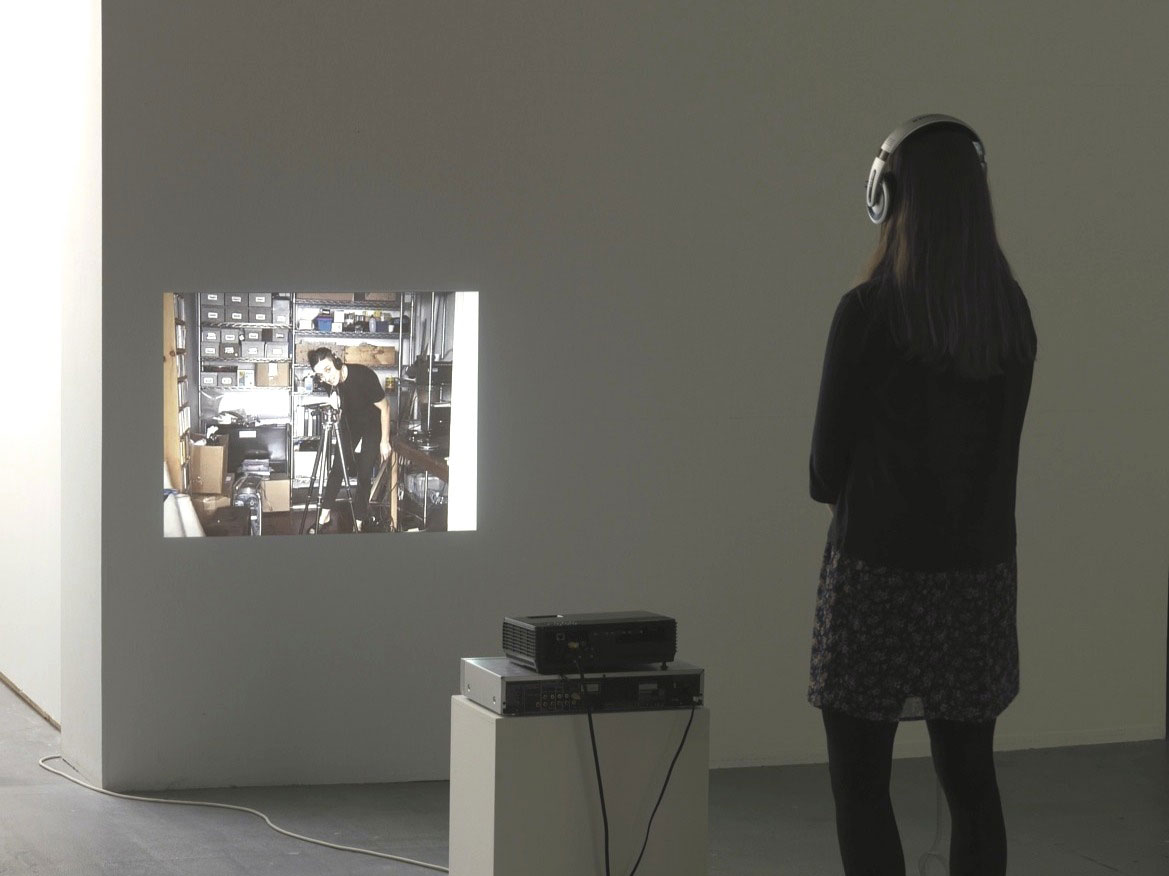A fundamental point in Okariz’s work was already present in Ferrer’s: distinguishing the public from the private. Contrasting the intimate and personal with the public, in other words, things that happen in private spaces that have historically been considered a woman’s own; and walls that limited their ability to act.
“ Their early video works often depicted women enclosed within four walls, in a relationship with the domestic space that was not always comfortable.”
Therefore, it is hardly surprising that the critique of domestic life has been present since the origins of feminist art. Some artists have made this critique by focusing on specific domestic spaces typical settings for women’s work. One example is the American artist Martha Rosler’s performance Semiotics of the Kitchen; many others have focused on femininity-related issues. In the Basque Country, the most striking example is Penélope by Itziar Elejalde (1980): a bright white cloth, hanging like clean linen, is fastened to a strip of pink neon with clothes pegs. On the cloth is a sentence embroidered in pink thread: Hasta cuándo, Penélope, abusarás de tu paciencia (How long, Penelope, will your patience endure?
Twenty years later, while Okariz was staging her first performances on the river Rhine, Naia del Castillo presented Espacio doméstico. Silla (Domestic Space. Chair) for the Gure Artea plastic arts award. The work consisted of two parts: an object and a photograph. The object was a wooden chair with a cushion on top and a skirt made of the same fabric tied to the cushion; the photograph was of a woman tied to the chair by the skirt she was wearing. It showed the woman fixed to the domestic space with a material linked to women’s work – fabric and sewing. Household furniture was represented as junk that defined and limited performativity, clouding the supposed warmth of the home with the darkness of prison.
The spaces and objects, habits, attitudes and movements that shape the role of women come to light in Naia del Castillo’s artwork; Itziar Okariz’s work creates situations that break away only to take on other spaces and attitudes. Okariz invites us to construct the complexity of identity by acting – and not in just any place, but in the public space that shapes the public subject.
Along these same lines, the group Pripublikarrak decided to take over the public space and in 2006 launched the Koktelazioak initiative to promote the idea constructing identity. In public squares in Bilbao, passers-by were given the chance to shape the map of their identity by choosing features from a menu. Instead of names, the menu offered actions, i.e., instead of “I am a sportsperson” they could choose “I practice sport”. To challenge the static identity, they wanted to show the participants how an identity is constructed and transformed every day through our actions. And to show how original all the identities were, they linked the actions on the menu to an ingredient. A cocktail with the different ingredients from their identity map was then made for each person.
In the work created by the group Señora Polaroiska we can also see the journey of the woman’s body into the public space. Their early video works often depicted women enclosed within four walls, in a relationship with the domestic space that was not always comfortable. Lady Jibia, however, made the same year as Koktelazioak, contrasted domestic space and nature: in the former women’s bodies were confined and standardised through clothing, work and gestures; in the latter, the body moves naked and free. From that point on, Señora Polaroiska’s work on how women take over the public space became increasingly evident.
A perfect example is their 2012 work Pilota Girls. The fronton is one of the central public spaces in the Basque Country. In addition to being a ball court, the fronton has often served as the village square. Like many other environments, it is totally masculine since only men played ‘pilota’ and the audience and the people who placed wagers on the game were also largely men. For this video, Señora Polaroiska followed the ‘pelotari’ (Basque ball player) Patri Espinar through the streets of Bilbao, while she used the walls of buildings as makeshift ball courts. The pelotari took to the streets of the city, once again showing attitudes and movements not associated with her gender and showing the spaces coupled with their defining gender markers.
The power of women’s actions and bodies to influence the public space, and the possibilities they offer for reflecting on the separation of gender are recurring themes in contemporary Basque art. Taking to the streets a means of protest is not alien to modern Basque society, and it continues to be necessary.

